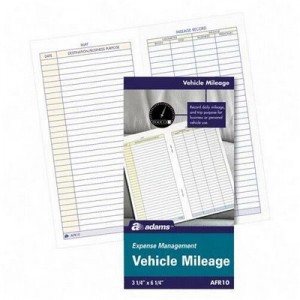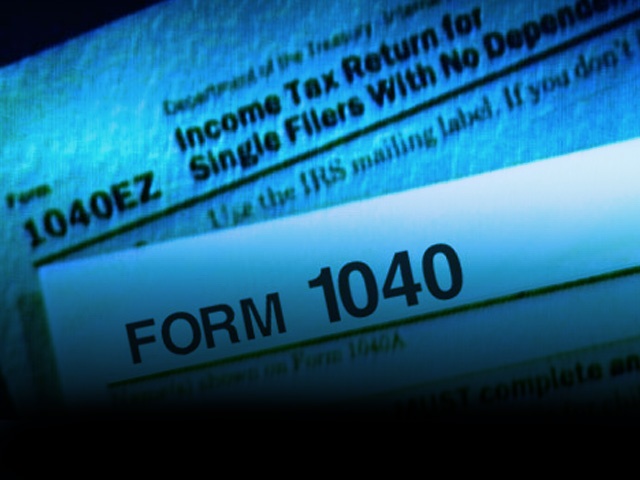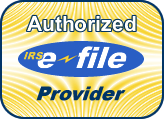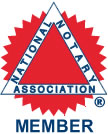Deducting Start-up Expenditures

A basic financial principle of being in business:
your revenues can be offset against your expenses.
Some expenses may be only partially deductible. Other expenses may have to be depreciated, over a period of years. The basic ultimate concept – expenses working to offset revenues- is still very easy to understand and explain.
What about those expenses you rack up before your business even opens, business start-up costs? Once you open your business and start generating revenues, you can write off many of those initial business startup costs come tax time.
The rules for taking advantage of these deductions are not as straightforward as they are for your business’s ongoing expenses.
Before you start a business, you’re more than likely going to have a certain amount of startup expenses. Track your business startup costs – begin at the beginning.
Startup expenses are things associated with setting up your business or investigating the purchase of an existing business. Among the items that count as startup expenses:
- Doing an analysis of your potential market(s)
- Paying consultants
- Buying initial supplies
- Advertising your new business
- Paying employees before the business opens
Track your organizational costs, the fees associated with initially organizing your new business. Among the expenses that can qualify as an organizational cost:
- State incorporation fees
- Lawyers’ charges for drafting incorporation papers
- Initial accounting fees
Take the upfront deduction now that you’ve tracked all your business start-up costs before opening shop.
Now the good part:
You can write off up to $5,000 in business startup costs and another $5,000 in organizational expenses in the year that you start a business.
(Note: These deductions are reduced if you have more than $50,000 of either type of expense.)
Once you’ve written off that first $5,000, you can still get a tax benefit from other expenses. However, those start-up costs will have to be amortized over 15 years.
The assets you buy for your startup can be written off. However, unlike supplies and other expenses, assets have to be depreciated. There are different rules for different assets.
If you’ve taken some items from your home and never used items for business before, you could depreciate them, based on their value when you started using them in your business. Most office equipment, for example, could be written off over seven years; computers can be deducted over a five-year period.
Put off what you can – if you’re going to have to depreciate some business startup costs, it makes sense to delay purchases that can be put off until after your business opens. The same purchase made after opening could be written off in full (providing they fall under the right rules – Section 179) in the first year instead of depreciated over 15 years.
Whether it makes sense to take as many deductions of business startup costs as you can in the year you start a business depends on individual circumstances. In some cases, owners of startups may prefer to stretch out deductions over several years so that they balance out more evenly against eventual revenue streams. A tax pro can advise you on the best expense- and tax-planning strategies for your own startup venture.
Start-up costs do not include deductible interest, taxes, or research and experimental costs.
TITLE 26 > Subtitle A > CHAPTER 1 > Subchapter B > PART VI > § 195
Deducting Business Expenses – IRS page
Related articles
- Taking Business Tax Deductions
- Election to Deduct Business Startup Expenses Gets Final Rules
- Small Business Expenses that are Tax Deductible
- Start-up Costs
Small Business Retirement Benefits Will Face Trouble With New Tax Reform
This is a guest post from Tim Chen, the CEO of NerdWallet, an unbiased resource for the best business credit cards.
A new round of tax reforms, which could be announced as early as this December, may jeopardize small business owners’ ability to provide retirement benefits for employees. The reforms, which are part of the push to reduce the federal deficit, could eliminate employer incentives to provide retirement benefits, making it impossible in many cases for small business owners to afford to do so. Such a shift could make it harder for small businesses to compete with larger corporations, by reducing their ability to attract and retain talent.
Until now, tax incentives have rewarded business owners who provide retirement benefits by making employer contributions to retirement plans tax-deductible, a compelling bonus for many small business owners. For employees, the new reforms are likely to lead to lowered caps on personal contributions and may remove the tax-deductible status of such contributions. Instead, employees would receive a flat tax credit of 18% or 30% when they withdraw funds in their old age.
The move is likely to hurt both small business owners and their employees, who are statistically less likely to invest in their own retirement plans without the incentive of employer contributions.
If you’re a small business owner, the choice to provide retirement benefits to your employees will depend to a large extent on what you can afford. Fortunately, there are a variety of options out there, so you can choose the type of plan that works best for you and your business. Let’s take a look at some of the most common choices for small business owners.
SEP IRAs
Simplified Employee Pensions, or SEP IRAs are one of the most flexible ways for employers to contribute to employee retirement plans. Employers fund the plans exclusively, so there are no requirements for you to match employee contributions. As of 2011, employer contributions are capped at $49,000 per employee per year. Yearly contributions can range from 0% to 25% of an employee’s income. This flexibility is perfect for small business owners; if times are lean at your company, you can hold off contributing and make up the difference in a better year. Also, employer contributions are (at least for now) tax-deductible.
If you’re on the employee side of the equation, keep in mind that this type of plan offers no emergency loan or “Roth option,” and you won’t be able to do any catch-up if you’re over 50.
SIMPLE IRAs
These plans aren’t as simple as the name implies. are also known as With Savings Incentive Match Plans for Employees, or SIMPLE IRAs, both employers and employees contribute to the plan, and employers must match up to 3% of each employee’s wages. The employer contribution cap is lower with SIMPLE IRAs than it is with a 401(k) plan. Employee contribution caps are also lower, coming in at $11,500 per year (as of 2011).
Like the SEP IRA, this type of plan doesn’t offer any Roth option, nor does it allow employees to take emergency loans from their retirement plan. The lower contribution caps may appeal to some small business owners who find the SIMPLE IRA more affordable than a 401(k).
401(k) plans
These plans, like rewards credit cards, have more perks and offer more flexibility. They also tend to be more costly and complicated for small business owners to offer. 401(k) plans offer the highest contribution limits for both employers and employees, and employees over 50 can play catch-up with higher contribution limits.
As an employer, you can limit which employees are eligible for the plan, allowing you to reward long-term loyalty to your company. Employee contributions are capped at $16,500 (as of 2011). While employees can choose to make tax-deferred contributions to their plans over the course of their careers, they can also opt for a Roth 401(k) in which they pay all taxes upfront.
For small business owners, these plans can make life more complicated. Employers who offer 401(k) plans must meet Employee Retirement Income Security Act (ERISA) regulations and standards. Like the Durbin Amendment, ERISA is intended to protect the public, but it can make your job as an employer more complicated. Employers who offer 401(k) plans are also subject to increased IRS reporting requirements.
Related articles
- Boost Your Retirement Savings
- Help! I don’t know what retirement plan you’re talking about!
- The Basics of a Traditional IRA
Tax Record Keeping Advice for Small-Business-Owning Technophobes
This is a guest post from Erinn Stam, the Managing Editor for nursing student scholarships. She attends Wake Technical Community College and is learning about nursing scholarships for working moms. She lives in Durham, NC with her lovely 4-year-old daughter and exuberant husband
 Are you afraid of Quicken? Do you hate working on your computer? Is record keeping one of your least favorite things to do? If you feel this way but still want to get every tax deduction you possibly can qualify for, you’re not alone.
Are you afraid of Quicken? Do you hate working on your computer? Is record keeping one of your least favorite things to do? If you feel this way but still want to get every tax deduction you possibly can qualify for, you’re not alone.
The following are tips for getting the most out of your small business tax returns without stressing yourself over software programs and techie stuff.
Invest in Good Old Fashioned Office Supplies
If you’re afraid of the computer and find record-keeping overwhelming, you’ll want to invest in a couple of crucial items that will save your sanity this year. Invest in:
- One expandable file folder (the ones that have about 12-15 files in them and close with a nice latch, looking like a little cardboard file cabinet you can carry by the handle)
- A box of business-sized envelopes
- A box of pens of your favorite kind
- A little notebook for mileage records
Once you have this file folder, devote it to your business and nothing but your business. Stick the pens inside so you’ll always have something handy to label new files with, and keep the envelopes by the file folder. Stick the mileage notebook in your car, purse, or laptop bag.
Use the Envelopes For…
I carry an envelope labeled “receipts for week of xx/xx/xxxx” in my laptop bag. I stuff all receipts from the week inside this envelope and jot down notes on the envelope for any expenses or payments that I might not be able to record with a physical receipt at the time. I also use the envelope to jot down mileage info if I’ve misplaced my mileage notebook.
Learn to Use an Excel Sheet and Forget About the Rest
You’ll only need to learn how to use one software program (and it’s easy-peasy) to keep all the records you need for your business, and that’s Microsoft Word’s Excel program (which is good on Macs, too – just use Open Office). Watch a YouTube tutorial on how to use Excel if you don’t already know the basics, or ask a friend to show you some basics.
Once you know how to perform the basics on Excel, set up several pages (tabs) for your business records. I like to use separate pages (tabs) for:
- Expenses
- Payments received from clients
- Payments made to clients
- Mileage records
- Questionable deduction expenses
You’ll find Excel is super easy to use and will allow you to enter dates and numbers, add numbers easily (learn how to use the “auto sum” feature – it’s the best!) and record progress on projects.
Devote One Hour a Week to Bookkeeping
You’re going to need to keep on top of this record-keeping task if you want to see results and save yourself a headache, so designate a weekly time to work on your business records. I devote every Friday night (around 5:00) to this and reward myself with a glass (or two, or three) of red wine and a bar of dark chocolate. During this time, I go through all my business transactions and make sure I have:
- Invoiced all clients and recorded the invoices on my client invoice page
- Paid all business-related bills and recorded the payments on my payment page
- Recorded (on my expenses page) and filed all physical receipts related to expenses (that were collected in that envelope I carried around all week)
- Calculated and recorded (on my excel mileage sheet) all mileage
- Stuck the receipts from the week (a purchase at Office Max, receipt from lunch with client at Panera Bread, etc.) into the “receipts” file in my expandable file folder box
- Printed out and stuck in my “receipts for payment” file all my payment records for the week
- Printed out and stuck in my “expenses for the week” file any electronic receipts for expenses (credit card record of an amazon.com purchase, paypal receipt of a paypal purchase, etc.)
- Recorded on my “Questionable Tax Deductions” page any expenses I think might qualify for a tax deduction but really don’t know about (and stuck my receipts into my file folder labeled the same)
How This Will Make Your Life Easier Come Tax Time
If you keep up with this simple system, you’ll find you end the year with a record of expenses, a record of your income, a record of your mileage, and a record of all things possibly deductible. With this handy dandy information, you can get advice from a tax accountant who will know exactly what you can and can’t deduct and who will handle the difficult filing stuff for you. For me, that’s the best I can hope for when it comes to the record-keeping and tax-filing end of running a small business.
Related articles
- How to Get Ready For Tax Season Early
- 3 Ways to Fail At Business Bookkeeping (And What You Can Do to Succeed)
- Audit Insurance
Hobby or Business? It matters to the IRS
Hobbies such as sewing, woodworking, fishing, gardening, stamp and coin collecting (I build radio controlled model boats/ships) can make you money. Recently a client contacted me about taking her Photography to a new level. So lets look at this subject again.
When that hobby starts to turn a profit, it might just be considered a business by the IRS.
The IRS defines a hobby as an activity that is not pursued for profit. A business, on the other hand, is an activity that is carried out with the reasonable expectation of earning a profit.
The tax considerations are different for each activity so it’s important for taxpayers to determine whether an activity is engaged in for profit as a business or is just a hobby for personal enjoyment.
Of course, you must report and pay tax on income from almost all sources, including hobbies. But when it comes to deductions such as expenses and losses, the two activities differ in their tax implications.
If you’re not sure whether you’re running a business or simply enjoying a hobby, here are some of the factors you should consider:
- Does the time and effort put into the activity indicate an intention to make a profit?
- Do you depend on income from the activity?
- If there are losses, are they due to circumstances beyond your control or did they occur in the start-up phase of the business?
- Have you changed methods of operation to improve profitability?
- Do you have the knowledge needed to carry on the activity as a successful business?
- Have you made a profit in similar activities in the past?
- Does the activity make a profit in some years?
- Do you expect to make a profit in the future from the appreciation of assets used in the activity?
An activity is presumed to be for profit if it makes a profit in at least three of the last five tax years, including the current year (or at least two of the last seven years for activities that consist primarily of breeding, showing, training, or racing horses).
The IRS says that it looks at all facts when determining whether a hobby is for pleasure or business, but the profit test is the primary one. If the activity earned income in three out of the last five years, it is for profit. If the activity does not meet the profit test, the IRS will take an individualized look at the facts of your activity using the list of questions above to determine whether it’s a business or a hobby. (It should be noted that this list is not all-inclusive.)
Hobby or Business
Hobby: If an activity is a hobby, not for profit, losses from that activity may not be used to offset other income. You can only deduct expenses up to the amount of income earned from the hobby. These expenses, with other miscellaneous expenses, are itemized on Schedule A and must also meet the 2 percent limitation of your adjusted gross income in order to be deducted.
Business Activity: If the activity is determined to be a business, you can deduct ordinary and necessary expenses for the operation of the business on a Schedule C or C-EZ on your Form 1040 without considerations for percentage limitations. An ordinary expense is one that is common and accepted in your trade or business. A necessary expense is one that is appropriate for your business.
If your activity is not carried on for profit, allowable deductions cannot exceed the gross receipts for the activity.
Note: Internal Revenue Code Section 183 (Activities Not Engaged in for Profit) limits deductions that can be claimed when an activity is not engaged in for profit. IRC 183 is sometimes referred to as the “hobby loss rule.”
Deductions for hobby activities are claimed as itemized deductions on Schedule A, Form 1040. These deductions must be taken in the following order and only to the extent stated in each of three categories:
- Deductions that a taxpayer may claim for certain personal expenses, such as home mortgage interest and taxes, may be taken in full.
- Deductions that don’t result in an adjustment to the basis of property, such as advertising, insurance premiums, and wages, may be taken next, to the extent gross income for the activity is more than the deductions from the first category.
- Deductions that reduce the basis of property, such as depreciation and amortization, are taken last, but only to the extent gross income for the activity is more than the deductions taken in the first two categories.
If your hobby is regularly generating income, it could make tax sense for you to consider it a business because you might be able to lower your taxes and take certain deductions.
Give me a call if you’re not sure whether your hobby is actually a business and we’ll help you figure it out.
Related articles
- The Most-Overlooked Tax Deductions
- Hobby or business? Taxes either way – Don’t Mess With Taxes
- When should a hobby become a business?
Save for College Tax-Free
College tuition and fees are on the rise. Shockingly, the cost for 4-year private schools now tops $36,000 per year on average.
But the investment is well worth it. According to the U.S. Census Bureau, individuals with a bachelor’s degree earn more than double those with just a high school diploma.
The two most popular college savings programs are 529 plans and Coverdell Education Savings Accounts. Whichever you choose, be sure to start when your child is young. The sooner you begin, the less money you will have to put away each year.
Example: Suppose you have one child, age six months, and you estimate that you’ll need $120,000 to finance his college education 18 years from now. If you start putting away money immediately, you’ll need to save $3,500 per year for 18 years (assuming an after-tax return of 7%). On the other hand, if you put off saving until your son is six years old, you’ll have to save almost double that amount every year for twelve years.
Financial Calculator: College Savings Planner
Use this calculator to help develop and fine-tune your child’s college education savings plan.
Based on the survey completed for the 2010 Trends in College Pricing, the average cost for tuition, fees, and room and board for 2010-11 was:
$16,140 per year for 4-year public (in state) colleges and universities.
This is an increase of 6.1% from 2009-10 findings.$36,993 per year for 4-year private colleges and universities.
This is an increase of 4.3% from 2009-10 findings.
It should be noted that, on average, full-time students receive $16,000 of financial aid per year in the form of grants and tax benefits for private 4-year institutions, $6,100/yr for public 4-year institutions, and $3,400/yr for public 2-year institutions.
Section 529 plans, also known as Qualified Tuition Programs, are the best choice for many families.
Including mine.
Every state now has a program allowing persons to prepay for future higher education, with tax relief. There are two basic plan types, with many variations:
- The Prepaid Education Arrangement. You essentially buy future education at today’s costs, by buying education credits or certificates. This is the older type of program, and it tends to limit the student’s choice of schools within the state.
- Education Savings Accounts. You contribute to an account earmarked for future higher education.
Tip: When approaching state programs, one must distinguish between what the federal tax law allows and what an individual state’s program may impose.
You may open a Section 529 plan in any state. But when buying prepaid tuition credits (less popular than savings accounts), you often need to apply the credits to a specific college or group of colleges.
Unlike certain other tax-favored higher education programs, such as the Hope and Lifetime Learning Credits, federal tax law doesn’t limit the benefit only to tuition. Room, board, lab fees, books, and supplies can be purchased with funds from your 529 Savings Account. (Individual state programs could be narrower.)
The key parties to the program are the Designated Beneficiary, the student-to-be, and the Account Owner, who is entitled to choose and change the beneficiary and who is normally the principal contributor to the program.
There are no income limits on who may be an account owner. There’s only one designated beneficiary per account. Thus, a parent with three college-bound children might set up three accounts. (Some state programs don’t allow the same person to be both beneficiary and account owner.)
Tax Rules Relating to 529 College Savings Plans
Income Tax. Contributions made by the account owner or other contributor are not deductible for federal income tax purposes. Earnings on contributions grow tax-free while in the program.
Distributions from the fund are tax-free to the extent used for qualified higher education expenses. Qualified expenses include tuition, required fees, books, supplies, equipment, and special needs services. For someone who is at least a half-time student, room and board also qualify.
In 2009, the American Recovery and Reinvestment Act (ARRA) added expenses for computer technology/equipment or Internet access to the list of qualifying expenses. Software designed for sports, games, or hobbies does not qualify, unless it is predominantly educational in nature. In general, however, expenses for computer technology are not qualified expenses for the American Opportunity Credit, Hope Credit, Lifetime Learning Credit, or tuition and fees deduction.
Gift Tax. For gift tax purposes, contributions are treated as completed gifts even though the account owner has the right to withdraw them – thus they qualify for the up-to-$13,000 annual gift tax exclusion. One contributing more than $13,000 may elect to treat the gift as made in equal installments over that year and the following 4 years, so that up to $65,000 can be given tax-free in the first year.
Estate Tax. Funds in the account at the designated beneficiary’s death are included in the beneficiary’s estate – an odd result, since those funds may not be available to pay the tax.
Funds in the account at the account owner’s death are not included in the owner’s estate, except for a portion thereof where the gift tax exclusion installment election is made for gifts over $13,000. For example, if the account owner made the election for a gift of $65,000 in 2011, a part of that gift is included in the estate if he or she dies within 5 years.
A Section 529 program can be an especially attractive estate-planning move for grandparents. There are no income limits, and the account owner giving up to $65,000 avoids gift tax and estate tax by living 5 years after the gift, yet has the power to change the beneficiary.
State Tax. State tax rules are all over the map. Some reflect the federal rules, some quite different rules. For specifics of each state’s program, see http://www.collegesavings.org.
The total contributions for the beneficiary of a Coverdell Education Savings Account (ESA) cannot be more than $2,000 in any year, no matter how many accounts have been established. (A beneficiary is someone who is under age 18 or is a special needs beneficiary.)
The beneficiary will not owe tax on the distributions if they are less than a beneficiary’s qualified education expenses at an eligible institution. This benefit applies to higher education expenses as well as to elementary and secondary education expenses.
Here are some things to remember about distributions from Coverdell accounts:
- Distributions are tax-free as long as they are used for qualified education expenses, such as tuition, books, and fees.
- There is no tax on distributions if they are for an eligible educational institution. This includes any public, private, or religious school that provides elementary or secondary education as determined under state law.
- The Hope and Lifetime Learning Credits can be claimed in the same year the beneficiary takes a tax-free distribution from a Coverdell ESA, as long as the same expenses are not used for both benefits.
- If the distribution exceeds education expenses, a portion will be taxable to the beneficiary and will be subject to an additional 10% tax. Exceptions to the additional 10% tax include the death or disability of the beneficiary or if the beneficiary receives a qualified scholarship.
Considering the wide differences among state plans, federal and state tax issues, and the dollar amounts at stake, please call us before getting started with any type of college savings plan.
Mileage Rates Changed beginning July 1 2011
 The IRS standard mileage rate for the final six months of 2011 was increased as a result of the recent increase in gasoline prices. The IRS usually only adjusts this rate annually in the fall.
The IRS standard mileage rate for the final six months of 2011 was increased as a result of the recent increase in gasoline prices. The IRS usually only adjusts this rate annually in the fall.
This is the second time in the past 3 years however that they have done this.
The standard mileage rate was increased by 4.5 cents for business, medical and moving travel for the last six months of 2011. Charitable travel remained unchanged at 14 cents per mile as this rate is set by statue, not the IRS.
The standard mileage rate is used to compute the deductible costs of operating an automobile for business use in lieu of tracking actual costs. This rate is also used as a benchmark by the federal government and many businesses to reimburse their employees for mileage.
Taxpayers always have the option of calculating the actual costs of using their vehicle rather than using the standard mileage rates.
Mileage Rates for July 1, 2011 to December 31, 2011 are:
- Business: 55.5 cents per mile (Compared to first six months at 51 cents per mile).
- Medical: 23.5 cents per mile (Compared to first six months of 2011 at 19 cents per mile).
- Moving: 23.5 cents per mile (Compared to first six months of 2011 at 19 cents per mile).
- Charitable: Unchanged at 14 cents per mile.
Possible Tax Deductions for Small Business Owners
 Today, April 18th is the dreaded “D” Day: Taxes are due. If you are a small business owner and have waited until the last minute to take care of your taxes make sure to consider the deductions listed below. If you’ve already filed, then you can always take them into account come next year’s filing season.
Today, April 18th is the dreaded “D” Day: Taxes are due. If you are a small business owner and have waited until the last minute to take care of your taxes make sure to consider the deductions listed below. If you’ve already filed, then you can always take them into account come next year’s filing season.
You have a “Home-Business”
If you run your business is ran through your home, you can acquire a huge tax deduction. There are two different ways that the IRS says you can qualify: 1) regular and exclusive use and 2) principal place of business.
“Regular and exclusive use” simply means that you use a spare bedroom or den in your home only to conduct business. For instance perhaps you run an online business through your bedroom or perhaps you’re a lawyer and file legal briefs etc. within one designated area on a regular basis (this is the key word, regular basis). This is not to be confused with simply having a “home office” where it serves as more of just a convenience. To learn more and how to differentiate the two, click here.
“Principal place of business,” on the other hand, means that while you may have other offices, the head office or headquarters is located within your home. Generally proof that administrative and bookkeeping tasks are completed within the home is needed to claim this deduction. To learn more, click here.
You Wine and Dine Your Clients
The IRS also allows small business owners to claim up to 50 percent deductions if you have proof that your meal and entertainment expenses/ transactions are business-related. This means that you have to partake in some sort of business endeavor/discussion either before the meal/event or at least after. However, you must have your receipts in order to claim this deduction (no exceptions). So if you did not save your receipts last year, start to do so now. Additional note: do not try to get deductions from un-related business meals/events. The IRS frequently audits those who claim this deduction since it is the one that is abused the most.
Business –Related Travel
If you use your personal vehicle for business-related purposes, for instance you use your car to meet up clients, customer or vendors or even to attend a local business meeting, the IRS allows you to deduct the mileage. It’s important that you keep accurate accounts and mileage records however, since this is an auditing-prone deduction as well. To learn the standard mileage rates, click here.
If you go on a “business trip”, you can also qualify for a deduction. But like all of the other deductions the trip has to directly correlate with your line of work and you must save all of your receipts in order to receive a 100 percent deductible on your business-travel expenses.
With that said, here are some additional deductibles you can consider as well: Cost of goods sold; charitable donations; and software, advertising and education expenses.
By-line:
This guest contribution was submitted by Jamie Davis, who specializes in writing about masters degree. Questions and comments can be sent to: [email protected].




















